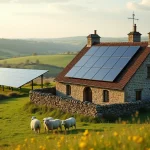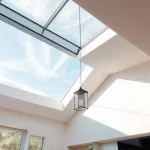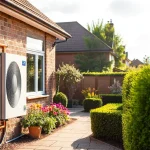Top Water-Saving Bathroom Fixtures for Your Bristol Flat Remodeling Project
When it comes to remodeling your bathroom in Bristol, one of the most important considerations should be water efficiency. Not only does it help in conserving this precious resource, but it also reduces your water and energy bills, making it a win-win for both your wallet and the environment. Here’s a comprehensive guide to the top water-saving bathroom fixtures you should consider for your project.
Understanding the Importance of Water-Saving Fixtures
Before we dive into the specifics, it’s crucial to understand why water-saving fixtures are so important. Traditional bathroom fixtures can be quite wasteful, with some shower heads using up to 15-20 liters of water per minute[1].
In the same genre : Reliable plumbing solutions from experts in reigate
“Water conservation is not just about saving money; it’s about preserving a vital resource for future generations,” says a local Bristol plumber. “By choosing water-saving fixtures, you’re contributing to a more sustainable future.”
Water Saving Shower Heads
One of the most significant water-saving opportunities in your bathroom is the shower head. Here are some top picks:
Also to see : Asbestos removal london: safe & expert services you can trust
How They Work
Water saving shower heads use flow restrictors or aerators to reduce the amount of water flowing through them. Aerators mix air with water, maintaining a strong and satisfying shower experience while using less water[1].
Benefits
- Reduced Water Usage: These shower heads can reduce water flow to as little as 6-9 liters per minute.
- Energy Efficiency: By using less hot water, you also reduce the energy required to heat it.
- Easy Installation: Most water-saving shower heads are easy to install and require no professional help.
- Minimal Maintenance: They require periodic cleaning to prevent mineral buildup but often feature self-cleaning nozzles.
Recommended Models
- Showery® EcoFlow: Known for its high pressure and water softening filter, this model is ideal for low water pressure areas[1].
- Showery® Turbo Shower Head: This high-performance shower head uses advanced technology to maintain strong water pressure while saving water[1].
Eco-Friendly Toilets
Toilets are another major water user in the bathroom. Here’s how you can make them more water-efficient:
Dual-Flush Toilets
Dual-flush toilets offer two flushing options: a full flush for solid waste and a partial flush for liquid waste. This can significantly reduce water usage.
Low-Flow Toilets
Low-flow toilets use advanced flushing mechanisms to clear the bowl with less water. Look for models with the WaterSense label, which indicates they meet EPA standards for water efficiency.
Benefits
- Substantial Water Savings: Dual-flush and low-flow toilets can save up to 4 liters of water per flush.
- Long-Term Cost Savings: Reduced water usage translates to lower water bills over time.
- Environmental Impact: Conserving water helps in maintaining healthy water resources.
Energy and Water Efficient Faucets
Faucets are often overlooked but can be significant water wasters if not chosen wisely.
Low-Flow Faucets
Low-flow faucets use aerators to mix air with water, reducing the flow rate while maintaining a strong stream.
Automatic Shut-Off Faucets
These faucets automatically turn off after a set period, preventing unnecessary water usage.
Benefits
- Reduced Water Usage: Low-flow faucets can reduce water flow to as little as 4 liters per minute.
- Energy Efficiency: By using less hot water, you also reduce the energy required to heat it.
- Convenience: Automatic shut-off faucets ensure water is not wasted due to forgetfulness.
Sustainable Bathroom Design Materials
While fixtures are crucial, the materials you choose for your bathroom design can also contribute to water efficiency and overall sustainability.
Eco-Friendly Vanity Tops
Materials like recycled glass, bamboo, and bio-based composites are not only stylish but also environmentally friendly[2].
| Material | Key Benefits |
|---|---|
| Recycled Glass | Unique appearance, durable, low-maintenance, wide range of colors and patterns |
| Bamboo | Highly durable, renewable, natural charm, complements various styles |
| Bio-Based Composites | Strong, beautiful, made from recycled paper and natural resins |
Sustainable Flooring
Bamboo and cork are excellent choices for eco-friendly flooring. They are durable, visually appealing, and have natural anti-microbial properties[4].
Tips for a Successful Bathroom Remodel
Planning and Design
Before you start, ensure you have a clear plan and design. Consider the layout, the fixtures you want to install, and the materials you will use.
Choosing the Right Bathroom Fitters
Select bathroom fitters who have experience with eco-friendly installations. They can provide valuable advice and ensure high-quality workmanship.
Obtaining Necessary Permissions
If you are planning significant changes, such as loft conversions, ensure you have the necessary planning permission. This will avoid any legal issues down the line.
Practical Insights and Actionable Advice
Assess Your Current Water Usage
Before installing new fixtures, assess your current water usage to understand where the most significant savings can be made.
Regular Maintenance
Regularly clean and maintain your water-saving fixtures to ensure they continue to function efficiently.
Consider the Long-Term Value
While eco-friendly fixtures might be more expensive upfront, they offer significant long-term savings and environmental benefits.
Transforming your Bristol flat’s bathroom into an eco-friendly space is not just about aesthetics; it’s about creating a sustainable and energy-efficient home. By choosing water-saving shower heads, eco-friendly toilets, and energy-efficient faucets, you are taking a significant step towards reducing your water and energy bills.
“Every small change we make in our homes can have a big impact on the environment,” notes a local environmental expert. “Choosing water-saving fixtures is a simple yet effective way to contribute to a more sustainable future.”
Whether you’re looking to lower your household expenses or adopt a more sustainable lifestyle, incorporating these water-saving bathroom fixtures into your remodel is a smart and simple upgrade for your home.
Detailed Comparison Table
Here is a detailed comparison of some of the top water-saving bathroom fixtures:
| Fixture | Water Usage | Energy Efficiency | Installation Ease | Maintenance Requirements |
|---|---|---|---|---|
| Showery® EcoFlow Shower Head | 6-9 liters/min | High | Easy | Periodic cleaning |
| Dual-Flush Toilet | 4 liters/flush | Medium | Moderate | Regular cleaning |
| Low-Flow Faucet | 4 liters/min | High | Easy | Periodic cleaning |
| Automatic Shut-Off Faucet | 4 liters/min | High | Easy | Minimal |
Frequently Asked Questions
What is a water-saving shower head?
A water-saving shower head is designed to use less water per minute compared to standard shower heads. It achieves this by limiting the flow rate, which helps conserve water and reduce utility bills[1].
How do energy-saving shower heads reduce energy consumption?
Energy-saving shower heads reduce energy consumption by limiting the amount of hot water used during a shower. This means your water heater doesn’t have to work as hard to heat large volumes of water, resulting in lower energy usage[1].
Are water and energy saving shower heads difficult to install?
Most water and energy saving shower heads are designed for easy installation and can be fitted to your existing shower arm without the need for professional help. They typically come with clear instructions and can be installed in a matter of minutes[1].
By making these informed choices, you can create a bathroom that is not only beautiful and functional but also eco-friendly and water-efficient, adding value to your home and contributing to a more sustainable future.










